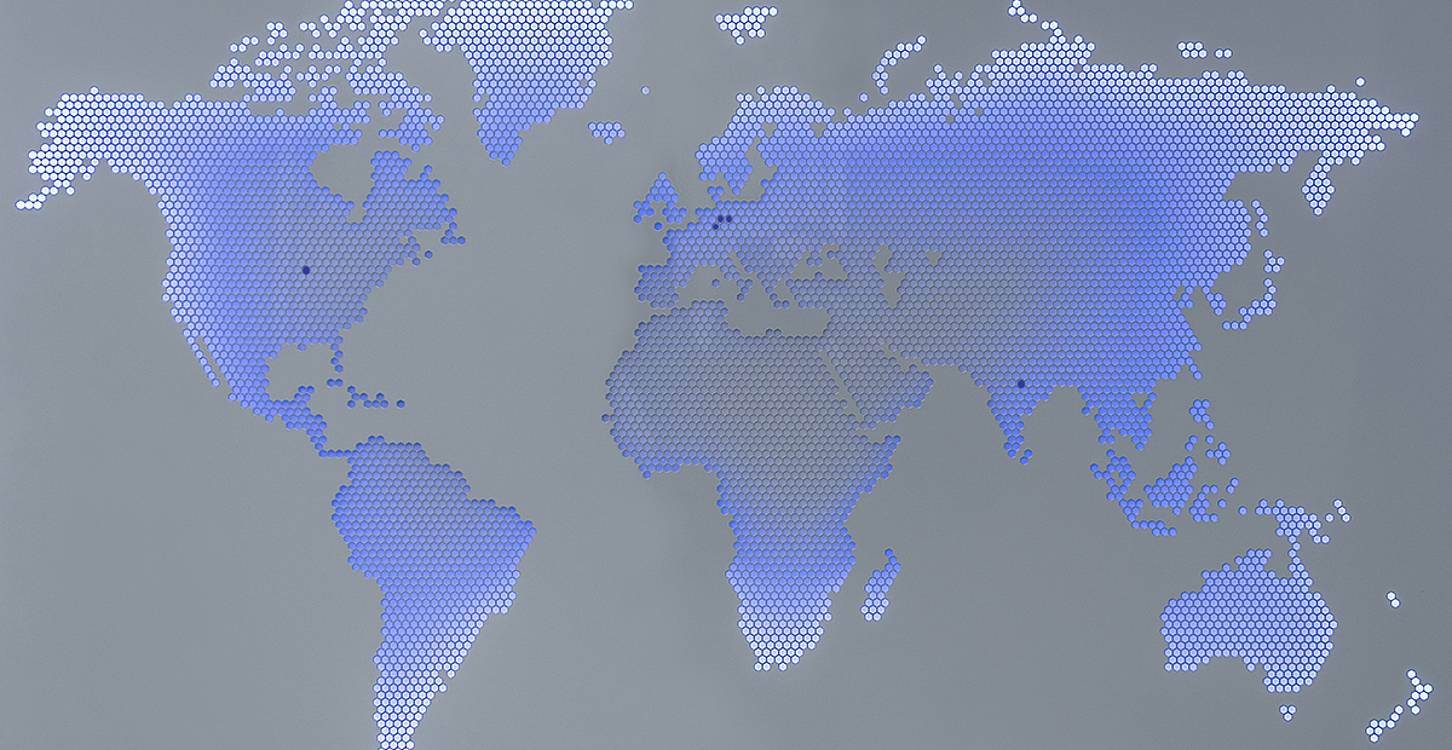Graepel News

“Each opening in the sheet weakens its structure,” explains sales manager Jan Fehlinger. “That’s why all manufacturers work with ribs and beads.” This increases the stiffness, so that the component fulfils its purpose. In spite of these refinements, however, the technical limit is reached at some point. Then the amount of material used is increased. As such, the sheet will hold up, but it will also weigh more. And this increases costs.
New design principle
With a 3D stamping process developed in its own research center in Löningen, Graepel now seeks to achieve the opposite: Lower weight while maintaining the same strength, or greater load-bearing capacity without any weight penalty.
The manufacturer accomplishes this by refraining from punching through the steel metal plate, as in common practice. “We now give the webs between the holes a three-dimensional structure as well,” Fehlinger reveals. “To put it simply, we’re still working with beads, just incredibly tiny ones.” The company makes the tools for this itself. The 3D stamping is now offered under the name “Graepel-PerForm.” The target group primarily includes vehicle and mechanical engineering firms, as well as construction fitters.
The technology has already undergone numerous series of testing. The results are impressive. “We have succeeded in reducing the material thickness by up to 50 percent, thus reducing the weight accordingly.” Stability has been improved by up to 300 percent. Whereas deflection in standard perforation amounts to 19 mm, it only measures out to 6.5 mm with the new stamping process. The pressure loss measurement carried out by TU Dresden also yielded an impressive result: the air resistance of the sheets had dropped by 30 percent. This advancement is enormous. Such values cannot be achieved with conventional cold-forming procedure, says Fehlinger.
No drawbacks when folded
Filigree perforated sheet as well as robust sheet metal profile gratings have been made with three-dimensional forming. “The values can be replicated.” Graepel’s new “indented perforation” offers another advantage: The indentation remains intact, even when folded at 90 degrees, so it does not tear or get flattened. The great formability of the structure can best be seen in pressing. “The sheets hold up,” Fehlinger emphasizes.
Graepel is one of the largest manufacturers of cold-formed sheet elements. This 3D stamping is considered to be the most advanced approach in the industry. The process can also be program-controlled so as to create individual perforation patterns.
Color coating as an extra option
In addition, the sheets can be combined with paint coatings. Nothing extraordinary in and of itself. However, Graepel already developed a procedure in 2016 which is clearly superior to conventional powder coating: The pressure loss of “Graepel-DuraVent” perforated sheets is 13 percent lower thanks to the improved perforation and the optimized coating, as TU Dresden has determined. Moreover, corrosion resistance is comparatively high, as demonstrated in a salt spray test of over 1,000 hours. The adapted coating variant for sheet metal profile gratings is known as “Graepel-ColorGrip.” In spite of the coating applied, the non-slip properties of the surface on these safety components are not lost, as one might actually expect. In fact, they remain on par with those of hot-dip galvanized gratings.
That it is Graepel in particular who has been making such advancements with these innovations may not come as a surprise: the company has been focusing on metallic materials for over 130 years. More on this can be found on the internet at Graepel.de.
